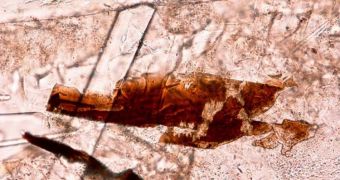In a paper published in the January issue of the journal Geology, experts describe the discovery of a mineral that was thought to exist only on the Moon. The rock sample in which the material was discovered is more than a billion years old, and was found in Australia.
Astronauts with NASA's Apollo 11 mission to the Moon were the first to discover the mineral, at a site in the Sea of Tranquility. As such, the material was named tranquillityite. Subsequent lunar missions returned even more samples of the stuff.
Another source of tranquillityite geologists had access to were lunar meteorites that had somehow made their way to Earth. What makes the new finding all the more interesting is the fact that the sample retrieved from Australia appears to have been produced here on Earth.
The mineral is primarily made up of yttrium, silicon, oxygen, titanium, silicon, iron and zirconium, a combination of elements that is was thought to be unlikely to appear naturally here, Space reports.
According to preliminary studies, the composition of the tranquillityite samples found in Western Australia is nearly identical to the ones of samples returned by the Apollo missions. It is now believed that the mineral occurs primarily in intrusions magma makes in surrounding rock layers.
“What I find the most surprising is that it took more than 40 years to find tranquillityite in rocks on Earth. Tranquillityite was probably not found until now because it is relatively rare and small. Tranquillityite is also prone to alteration during later heating and fluid flow,” Birger Rasmussen says.
The expert holds an appointment as a geologist at the Curtin University, in Bentley, Australia. He was a member of the research team that conducted the research. The expert adds that even the research techniques usually employed to search for minerals in dolerite rocks may have been unsuited for finding it.
“I think we will find that it is much more widespread on Earth — there is no reason that it should be restricted to Western Australia,” Rasmussen goes on to say. More in-depth studies of the material could lead to a better understanding of how Earth evolved over time.

 14 DAY TRIAL //
14 DAY TRIAL //